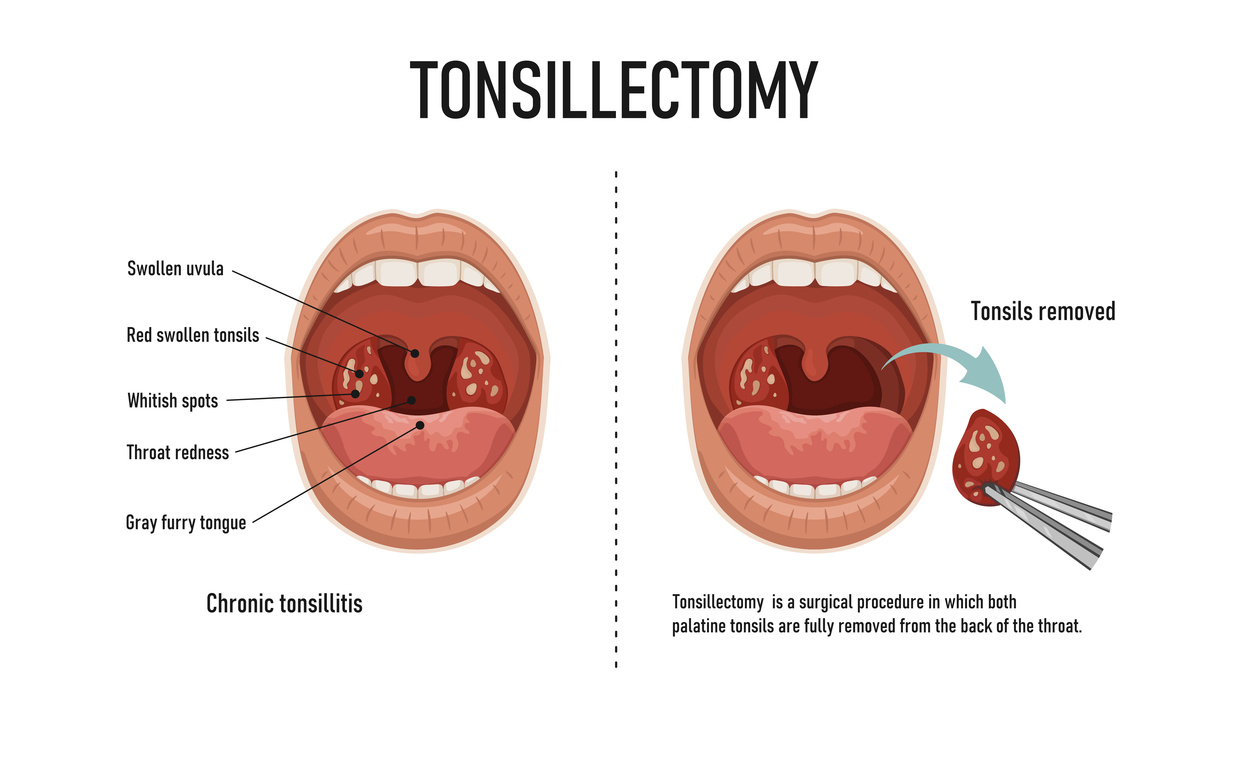Tonsillectomy: Everything you need to know
A tonsillectomy is one of the most common surgical procedures in the UK amongst children. And although it is often seen as a child-specific surgery, many adults go through tonsil removal surgery as well.
If you (or your child) require a tonsillectomy, or your doctor is considering this as an option for you in the future, it is important to be as informed as possible about the procedure.
This article will provide a comprehensive guide to everything you need to know about tonsillectomies, including who needs one, what the medical procedure is, what to expect before, during, and after, the risks and benefits, and how to prepare for a tonsillectomy.
By the end of this article, you will have a better understanding of whether a tonsillectomy is the right course of treatment for you or your child. And hopefully, you will feel a lot more comfortable about your upcoming surgery!
What is a tonsillectomy?
A tonsillectomy is a surgical procedure to remove the tonsils. Tonsils are the two small glands located at the back of the throat, one on each side. They are part of the lymphatic system, which helps to fight infection.
A tonsillectomy is typically done to treat infections or other conditions that affect the tonsils. In fact, in the UK, 83% of tonsillectomies in adults occur as a result of chronic tonsillitis or adenoiditis.
Tonsillectomies are usually performed in a hospital or outpatient surgery centre. While it was more common to do tonsillectomies under local anaesthetic 50 years ago, these days the procedure is typically done under general anaesthesia, which means the patient will be asleep during the surgery.
After the tonsils are removed, the patient will need to stay in the hospital for a few hours for observation. In most cases, you can go home the same day. In the rare case of complications, you may be asked to stay overnight for observation.
Who needs a tonsillectomy?
A tonsillectomy can be performed at any age, though it is most commonly recommended for children who have recurrent or chronic tonsillitis. Tonsillitis is a common illness during childhood, but most children recover without needing surgery. If a child isn’t suffering from chronic tonsillitis, they may still be offered the surgery if their inflamed tonsils are causing sleep-disordered breathing, such as obstructive sleep apnea, or making them worse.
It’s thought that in the past, tonsillectomies were over-prescribed to children. As a result, GPs are far less likely to recommend and refer patients for the procedure unless tonsillitis affects their quality of life or causes significant health consequences.
In adults, a tonsillectomy is usually only recommended if other treatment options have failed. Treatment options for adults with tonsillitis include antibiotics and pain relievers.
The main reason doctors will recommend an adult for a tonsillectomy is when they suffer from chronic tonsillitis, preventing them from being able to ward off infection as easily as they should. At this point, the main course of treatment is steroids, which may be prescribed to reduce severely swollen tonsils. If this sounds like something you’re suffering from, it’s worth having a conversation with your GP about your treatment options.
As well as tonsillitis, surgery may be an option for adults who have sleep-disordered breathing and need more space in their windpipes.
A tonsillectomy is a major surgery and as with most surgeries, it carries risks such as bleeding, infection, and reaction to anaesthesia. The decision to have a tonsillectomy should be made after careful consideration and discussion with your or your child’s doctor.
How does a tonsillectomy work?
A tonsillectomy is a surgical procedure to remove the tonsils that usually takes anywhere between 30–60 minutes, depending on how easy it is to remove the tonsil tissue from your throat. During your tonsillectomy, you will be put under general anaesthetic. Your surgeon will then remove your tonsils through your mouth.
There are different methods used for tonsil removal, including:
Coblation
Short for “controlled ablation,” this is a minimally invasive technique where the tonsils are removed using radio frequency waves. This method protects the surrounding tissue and has a relatively painless post-operative recovery.
Cold steel dissection
A scalpel is used to make an incision in the back of the throat and the tonsils are removed. This technique is more invasive than coblation and often requires more recovery time; however, it also leads to minimal post-operative bleeding.
Electrocautery removal
Heat is used to burn away the tonsil and then cauterise the wound to stop bleeding. It’s one of the most common tonsillectomy options, but it can have some unwanted side effects immediately after the operation if the hot equipment used to burn off the tonsils accidentally touches surrounding tissue.
What to expect before, during and after a tonsillectomy
Before having a tonsillectomy, you will have a consultation with your ENT specialist to discuss why the procedure is necessary and what the risks and benefits are.
On the morning of your surgery (or from 12am the night before if your surgery is early in the morning), you will be asked not to eat and drink to help prevent any general surgical complications.
During the procedure, you will be under general anaesthesia so you won’t experience any discomfort.
Immediately after the surgery, you will not be able to eat or drink for several hours afterwards. You may experience pain as the anaesthesia wears off. In some cases, you may vomit blood. In most cases, this is normal, it’s simply the blood swallowed from the procedure coming back up – the nurses on your ward will look after you and make sure everything is ok.
After the tonsillectomy, you can expect a sore throat and pain. For most patients, this lasts up to 10 days. It’s important to follow the ENT specialist’s post-operative instructions to ensure a successful recovery.
The risks of tonsillectomies
Tonsillectomies are one of the most commonly performed childhood surgeries and are quite safe. However, there are some risks associated with the procedure.
The most common complication is bleeding, which can range from mild to severe. In rare cases, bleeding can be life-threatening. Other potential complications include infection, inflammation, and stiffness of the jaw.
If you’re worried about any post-operation symptoms, always get in touch with your doctor, or go to A&E to get checked out.
How to prepare for your tonsillectomy
If you’re scheduled to have a tonsillectomy, your surgeon will provide you with specific instructions on how to prepare for your surgery. It is important to follow these instructions carefully in order to minimise the risk of complications. In general, you will be asked to:
Stop eating or drinking anything at least 8 hours before your surgery. This includes water, gum, and mints.
Avoid smoking for at least 24 hours before your surgery. Smoking can increase the risk of complications after surgery as it reduces the body’s ability to stop bleeding.
Arrange for someone to drive you home after your surgery. You will not be able to drive yourself home after being given anaesthesia. And with the potential throat pain, you wouldn’t want to drive anyway!
Stock up on ice lollies and soups. With the pain in your throat, you might not want to eat, but getting calories into your body is the best way to speed up the healing process. Ice lollies are great because they help dull the pain, and soups are an easy way to get much-needed nutrients in.
Set a timer to drink water at least once an hour. During the healing process, your throat will get really dry, and a dry throat that’s healing from surgery is extremely painful. You may not want to drink anything but make it your mission to drink water as regularly as you can handle.
Follow any other specific instructions provided by your surgeon.
Understanding tonsillectomies is the first step in your decision process
There’s a lot to know about tonsillectomies, which can be quite overwhelming. Hopefully, this guide has given you a comprehensive understanding of the medical procedure. Remember to consult your doctor to see if a tonsillectomy is right for you and get more personalised information.






